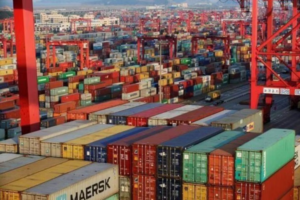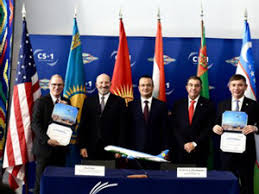A consultant warns of muted air freight prospects for 2026 but cites US stock gaps & peak freighter hours as positive indicators.

Ryan Keyrouse, chief executive of consultant Rotate, says there are reasons to be hopeful about the upcoming year, even though the overall outlook for air cargo in 2026 is muted.
Speaking at the TIACA Air Cargo Forum event in Abu Dhabi last week, Keyrouse stated that since the industry had reported 26 consecutive months of year-over-year growth (the record is 31 months) and “what goes up must come down,” prospects for demand growth in 2026 were dampened.
After a few years of disruption that led to a modal shift to air, he continued, container shipping companies were strengthening their reliability levels, and these volumes would probably return to ocean transport.
But there were also a number of reasons to be hopeful, he said.
First, he stated that in seven of the previous eight months, US sales levels had exceeded inventory levels, which is “usually a good sign for air cargo.”
Second, cargo aircraft utilisation reached a record high of 15 block hours per day, indicating robust demand for freighters.
Keyrouse suggests a pragmatic reason for confidence in the coming year, noting that the continued operation of cargo freighters inherently signals underlying demand. In his view, the fact that these dedicated aircraft are airborne means they are actively “carrying something,” providing a tangible basis for optimism regarding next year’s air freight outlook.
The US tariff policy for the upcoming year is likewise unclear, he continued. However, this might be viewed as both a plus and a reason for some people to be uncertain about demand levels in 2026.
He also asserted that the prevailing tariffs could potentially serve as a positive factor, implying they might create market conditions that benefit the air cargo sector. “If we completely have to change everything again, it will mess up all the supply chains, and that is usually good for air cargo, as we have seen this year.”
In the long run, Rotate anticipates that air cargo will increase at a rate of about 3% annually, following GDP growth rates. He did, however, add that as the economies of South and Southeast Asia exceed those of the rest of the world, they are anticipated to rise at a faster rate.
As more widebody passenger and freighter aircraft enter the market, capacity is anticipated to increase by roughly 6-7% next year.
A year in retrospect
According to Keyrouse, 2025 was a year that consistently disappointed in terms of demand; Rotate anticipates that tonnages will be approximately 3.9% higher at the conclusion of the year compared to 2024 levels.
He cited a number of factors that contributed to this year’s increase in demand, including shifting supply chains, robust sales compared to US inventory levels, and front-loading ahead of impending US tariffs.
Regarding the latter, he claimed that although Chinese demand for US goods may have decreased, US quantities have moved to Southeast Asia.
China, however, had shifted its attention to the Middle East, Europe, and Southeast Asia.
“Everybody expected turmoil, but everything just shifted and we continued to see growth,” he stated.
Demand from “other” Asia Pacific to the US increased by 48% between May and July, more than offsetting China’s 29% year-over-year fall.
In the meantime, volumes improved by 25% from China to “Other” Asia Pacific and by 35% from China to Europe.
Cargo carriers quickly moved capacity to developing countries in response to shifting demand; the companies that added the greatest capacity to Vietnam’s rapidly expanding economy were Atlas, China Airlines, China Cargo, Emirates, and FedEx.
According to Keyrouse, overall capacity for the year has increased by 6% over the previous year, which has put pressure on rates.
But because fuel prices had dropped, freighter profitability had stayed steady.
SOURCE – AIR CARGO NEWS











